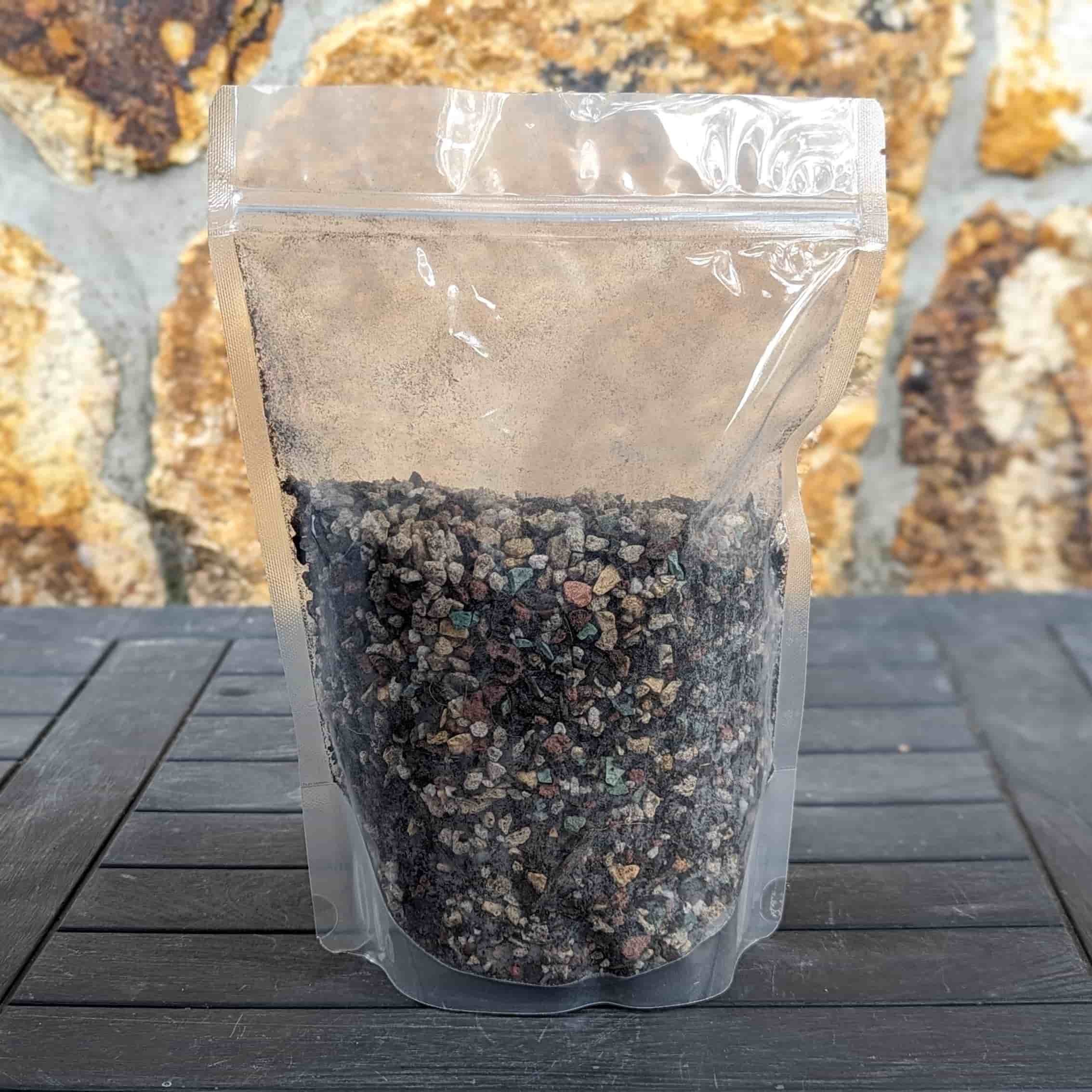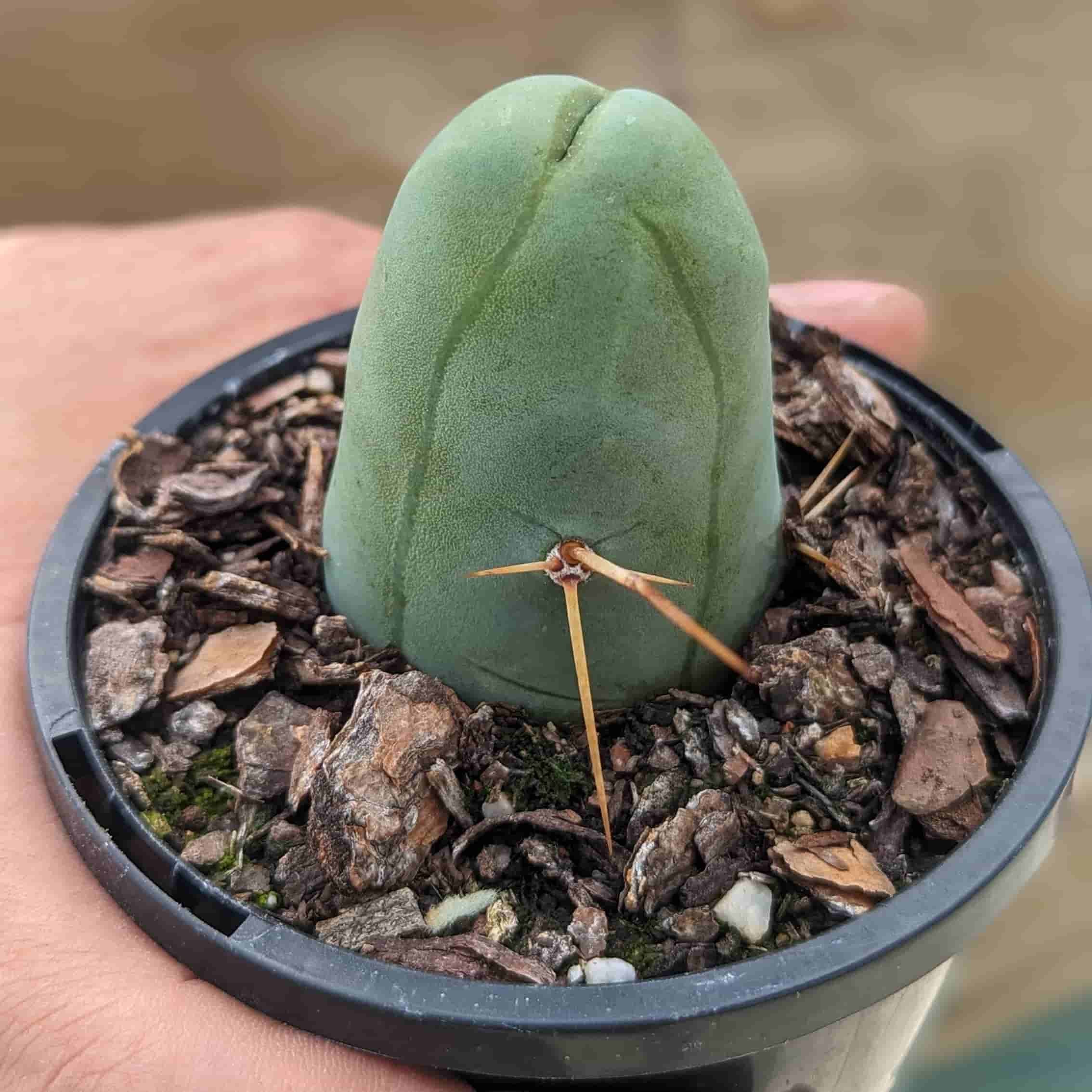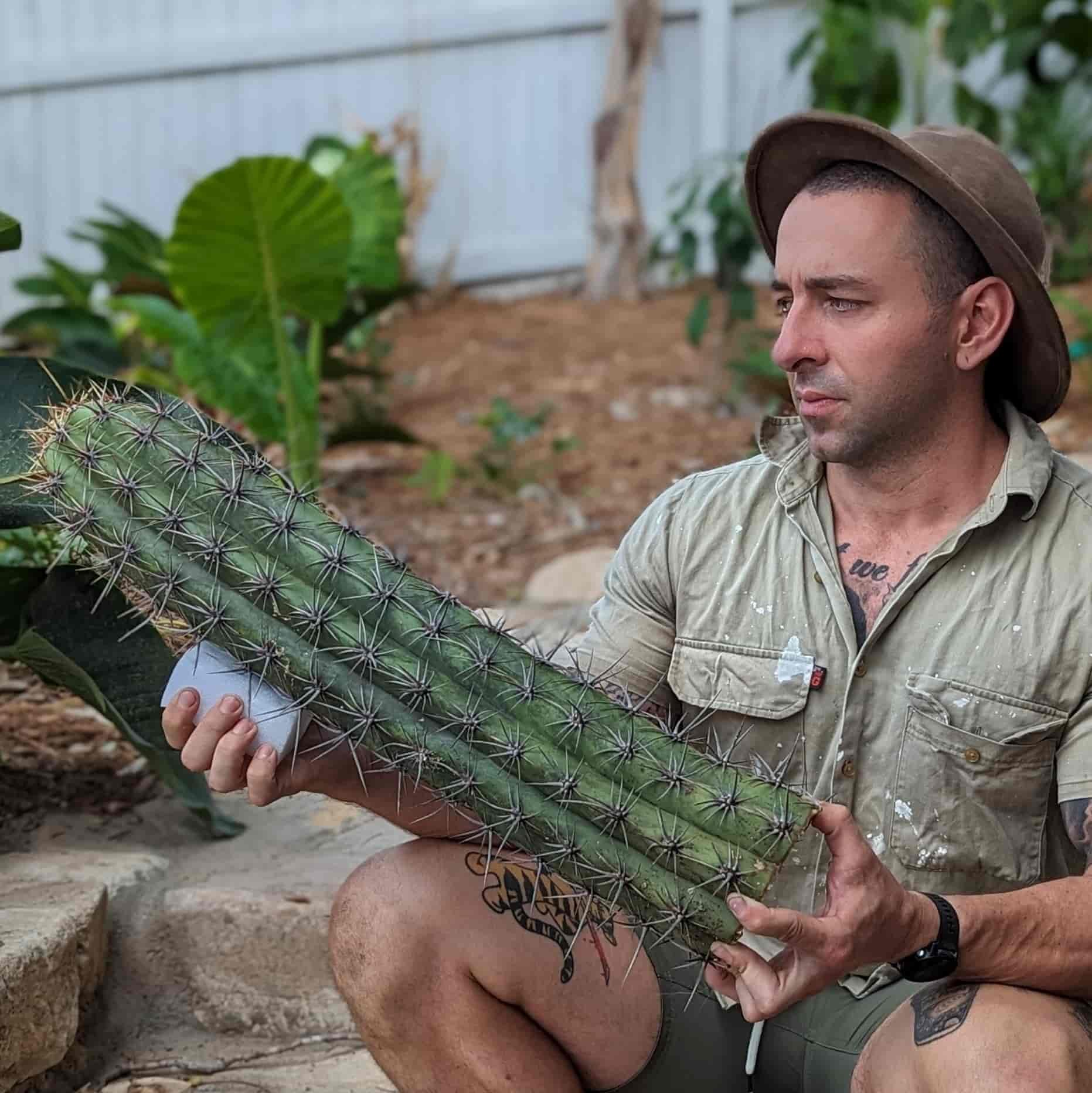 Image 1 of 4
Image 1 of 4

 Image 2 of 4
Image 2 of 4

 Image 3 of 4
Image 3 of 4

 Image 4 of 4
Image 4 of 4





Golden Barrel Cactus (Echinocactus grusonii)
Size: 100mm & 200mm pots. All our cacti are shipped bare-rooted (without pot & dirt).
Echinocactus grusonii, commonly known as Golden Barrel cactus, is one of the most iconic cacti in the world. Whilst it is famous as a striking landscaping plant, it is almost extinct in its native habitat - central Mexico's dry and rocky deserts.
Golden Barrels can be grown in pots or in the ground. They prefer a full or mostly-full sun position and do not tolerate large volumes of water. If grown outside in a region with lots of rainfall ensure the soil or potting mix is rocky and very fast draining.
These cacti are slow growing, reaching a maximum diameter of roughly 1 metre at full maturity which takes 40-50 years from seed.
Size: 100mm & 200mm pots. All our cacti are shipped bare-rooted (without pot & dirt).
Echinocactus grusonii, commonly known as Golden Barrel cactus, is one of the most iconic cacti in the world. Whilst it is famous as a striking landscaping plant, it is almost extinct in its native habitat - central Mexico's dry and rocky deserts.
Golden Barrels can be grown in pots or in the ground. They prefer a full or mostly-full sun position and do not tolerate large volumes of water. If grown outside in a region with lots of rainfall ensure the soil or potting mix is rocky and very fast draining.
These cacti are slow growing, reaching a maximum diameter of roughly 1 metre at full maturity which takes 40-50 years from seed.
Size: 100mm & 200mm pots. All our cacti are shipped bare-rooted (without pot & dirt).
Echinocactus grusonii, commonly known as Golden Barrel cactus, is one of the most iconic cacti in the world. Whilst it is famous as a striking landscaping plant, it is almost extinct in its native habitat - central Mexico's dry and rocky deserts.
Golden Barrels can be grown in pots or in the ground. They prefer a full or mostly-full sun position and do not tolerate large volumes of water. If grown outside in a region with lots of rainfall ensure the soil or potting mix is rocky and very fast draining.
These cacti are slow growing, reaching a maximum diameter of roughly 1 metre at full maturity which takes 40-50 years from seed.
-
Echinocactus grusonii can be found growing naturally on steep hills and cliffs in central Mexico's dry and rocky deserts.
It grows at altitudes between 1,400 and 1,900 metres above sea level in the Rio Moctezuma Valley.
Whilst Echinocactus grusonii can be found in collections and gardens all over the world, it is almost extinct in its native habitat due to illegal overcollecting.
-
Echinocactus grusonii are summer-growing, lovers of heat and relatively easy plants to cultivate.
They require a sharp, fast-draining mineral-based substrate with only a little organic matter (70% mineral, 30% organic).
Water regularly during spring and summer. This plant thrives with generous amounts of water, but it is important to let the soil dry out between waterings.
Avoid getting water on the cactus itself, try to water around it. Water droplets on the skin of a cactus act like magnifying lenses for the sun, leading to sunburn, unsightly scars and sometimes terminal fungal infections.
Light feeds with fertiliser can be applied from late spring to early autumn. Try to source a low-nitrogen and high-potassium fertiliser. An NPK ratio of 1(N) 0.4(P) 1.5(K) is ideal. Always start with small amounts and work up to avoid fertiliser burns. Cacti will only ever require, at most, half the recommended dosage of other plants.
-
Echinocactus grusonii are self-fertile and mature specimens flower and produce seed readily from spring through to autumn. Fresh seed germinates readily and growth is reasonably quick in the first 5 years, then slowing down dramatically.
After approximately 5 years Echinocactus grusonii will maintain a fairly consistent growth rate of about 3-4cm in diameter per year.
Golden barrels don’t really ever stop growing, and it’s far more common for them to die of some kind of disease or infection long before reaching maximum size.
In habitat, they have been observed at sizes up to 180cm in diameter. In cultivation typically sizes range from 10-80cm.
-
Echinocactus (E-ky-no-cac-tus)
Echinocactus is composed of the greek words echinos, meaning hedgehog and kaktos (cactus), meaning thistle.
grusonii (grew-so-knee-eye)
Grusonii is named after the german entrepreneur and cactus collector Hermann August Jacques Gruson. In the late 18000’s Hermann built the world-famous Gruson Greenhouses where he owned the largest collection of cacti in the whole of Europe.









